[ad_1]
By Adrienne Gendron, Gradutate Intern in Objects Conservation at the CMA

Several materials embody luxurious additional totally than mom-of-pearl and gold. This mother-of-pearl supporter is composed of 19 slats with gold-coloured inlay and cutout layouts featuring butterflies and bouquets (fig. 1). The supporter was made by René Lalique, a French jeweler and glassmaker working at the height of the Artwork Nouveau motion in the early 20th century. At that time, artists began to refocus on the importance of the specific artist’s hand after a period of time of fascination with industrial processes. The Art Nouveau movement launched an appreciation for organic and natural forms, references to the purely natural entire world, and an affinity for Japanese fashion. Simultaneously, there was an outpouring of artistic work into the realm of decorative arts, resulting in a loaded time period of creative imagination and ornamentation of day-to-day objects. Lalique was heralded as “the greatest jeweler doing the job in France” and was regarded for using elements animated by light-weight (Harrison 2008, 29).
The mother-of-pearl made use of to generate this Lalique supporter is fairly slender (about the thickness of a quarter) and built even additional sensitive thanks to the intricate cutout designs. Yrs ago, one of the slats broke into various pieces. Former maintenance tries applied an adhesive, but with this sort of a small surface area space to be part of, the repairs were inherently weak and failed repeatedly. As element of my graduate internship with the museum’s objects conservation lab, I was asked to discover a improved alternative to this demanding challenge.
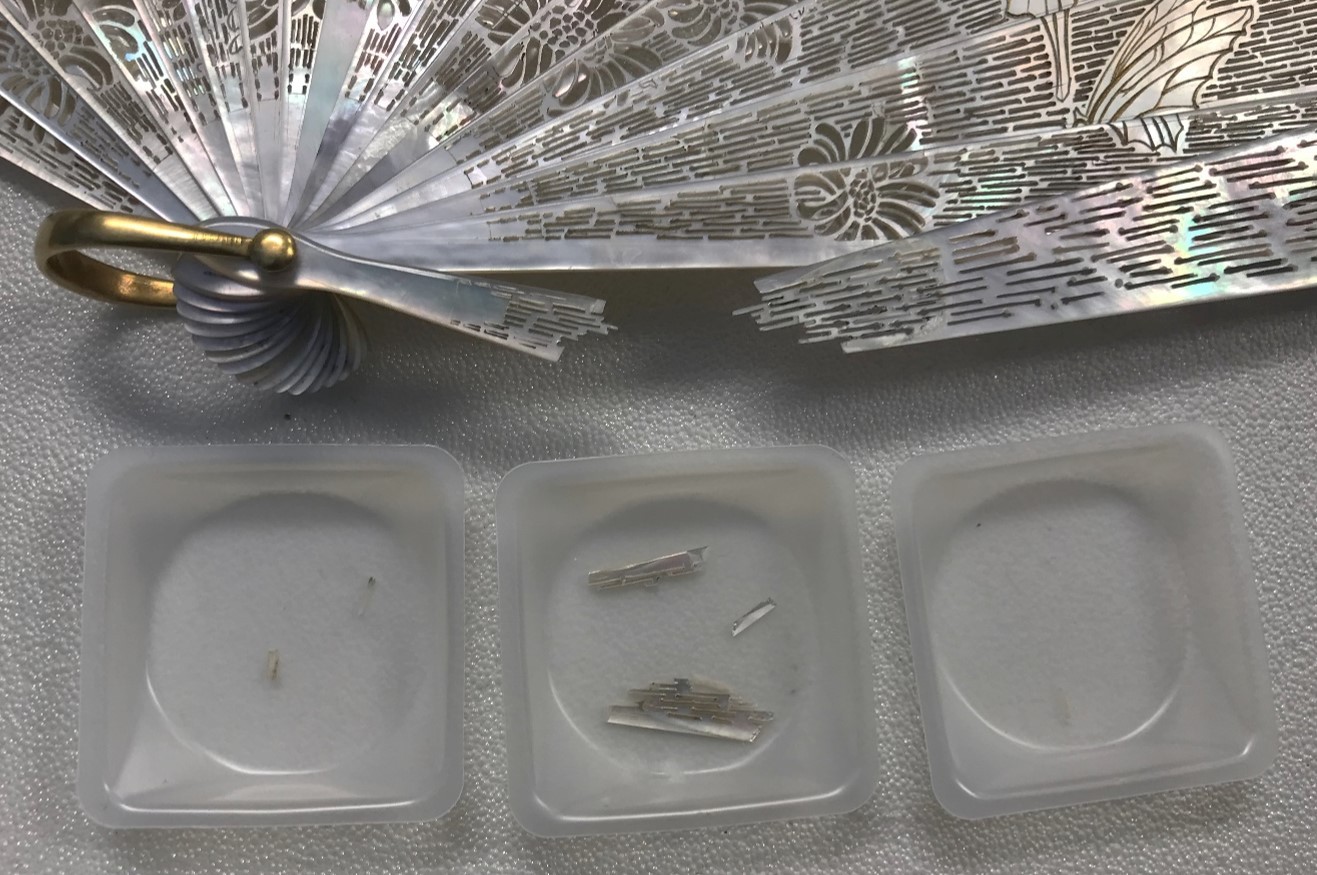
To do this, it is important to assess an item and figure out the most suitable procedure. Right after studying the object’s cultural context, I determined that, as an Artwork Nouveau luxurious ornamental arts item, the fan’s attractive physical appearance is paramount to its main which means. The item is no for a longer time visually coherent in its current ruined point out, and repairing it would return a diploma of visible legibility to the object reliable with Lalique’s inventive tradition. Its current condition also renders the object unstable and susceptible to more injury, so restoring the area would decrease possibility. With these considerations in thoughts, I made the decision to learn as a lot as I could about the object and how it was designed, in order to create an acceptable treatment method strategy.
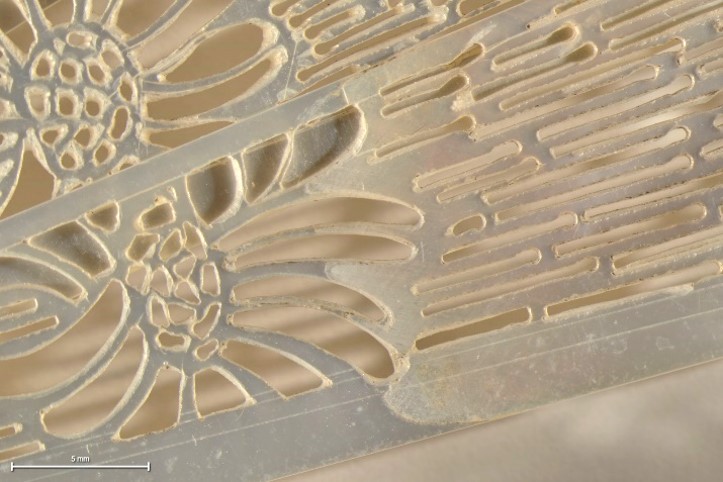
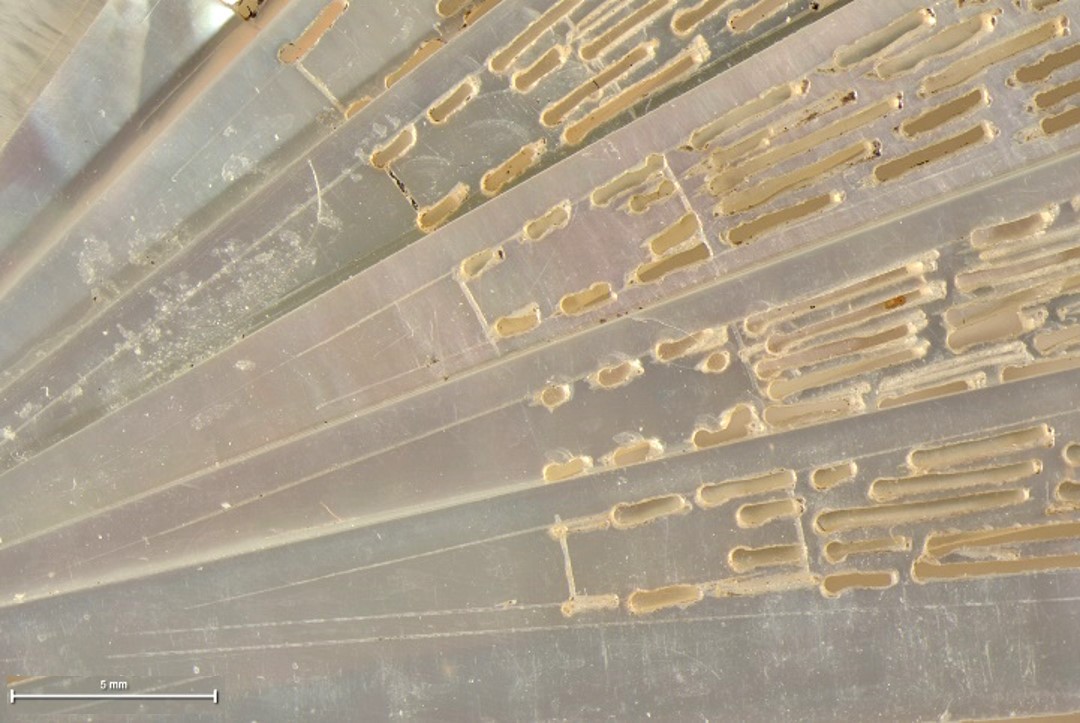
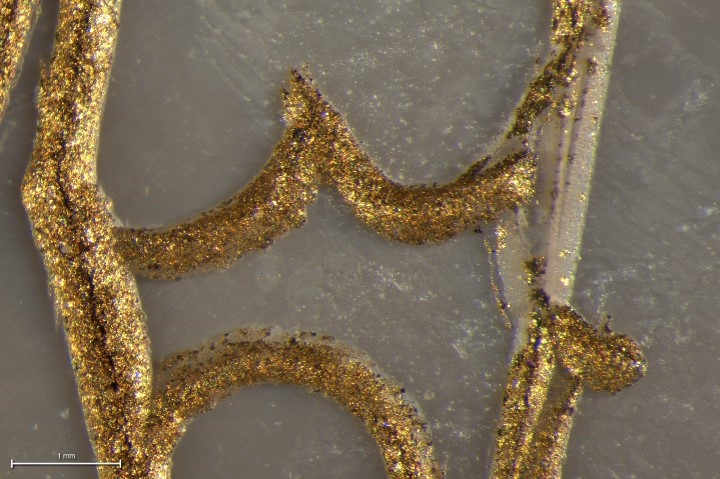
Examining the lover beneath a microscope revealed fascinating particulars. While at 1st look the slats seem to be built in one particular piece, skillfully executed joins are obvious underneath magnification (fig. 3). The artist utilised at least two pieces of mother-of-pearl to make every single slat, using a advanced splicing technique to make the joins as invisible as attainable. I could also see that the artist initially mapped out the designs in shallow incised strains (fig. 4). The narrow slits have been made applying a small drill to pierce holes, which were being then elongated into slits with a jeweler’s observed.
The entrance of the enthusiast is also decorated with incised lines, which are loaded with gold-coloured content . The incisions have angled sides, indicating that they were built making use of a pointed resource. Beneath the microscope, the gold content appears to be like a lot of specific particles as opposed to a one sheet of metallic, suggesting that it was applied as a powder alternatively than as a leaf (fig. 5).

At to start with glance the gold-coloured material and steel loop appeared to be pure gold on the other hand, points are not usually as they seem! I made use of moveable X-ray fluorescence (pXRF), a non destructive analytical system that offers information on elemental composition, to find out much more. I identified that the gold-coloured product contains brass, a copper and zinc alloy, alongside with some gold. My analysis of the metallic loop proposed that it is probably composed of a copper alloy foundation metal that has been gold plated.
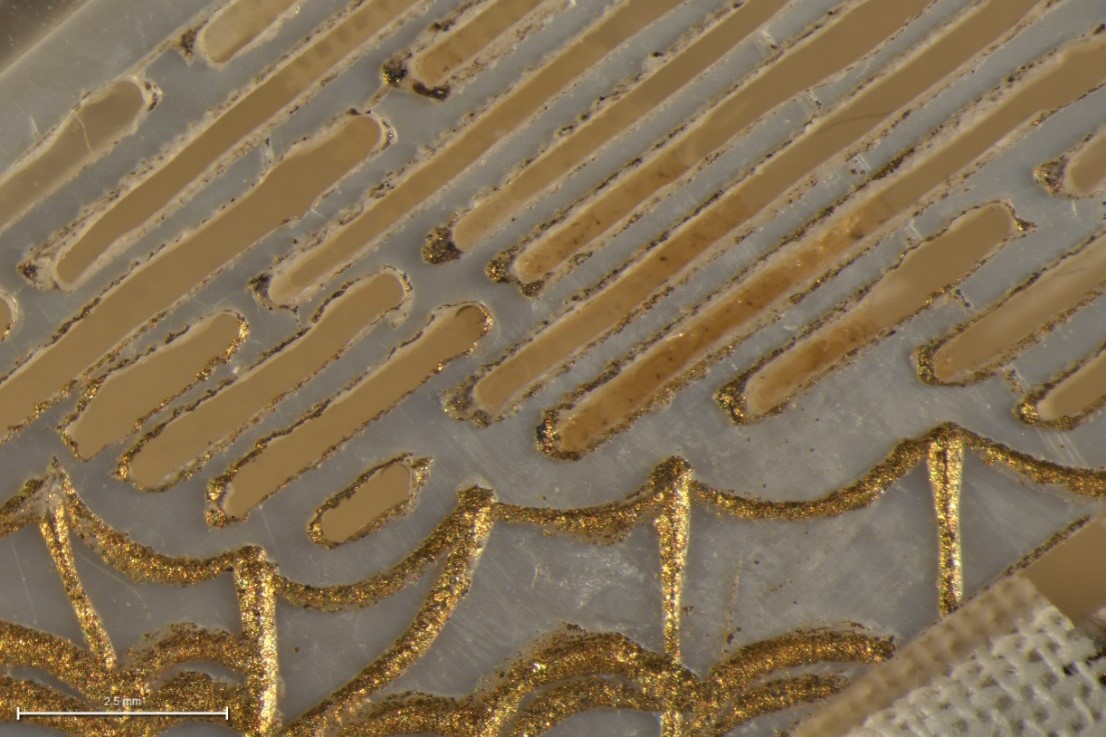
Next, I made mock-ups to obtain a fingers-on understanding of how the admirer was built. Utilizing sample parts of mom-of-pearl, I produced incised channels with a Dremel tool and analyzed three strategies of making use of gold-coloured fill: flash gilding (gold powder applied over a binder), shell gold (gold particles suspended in a gum arabic medium and applied as paint), and mordant gilding (gold leaf applied more than a binder) (fig. 6). I located that the flash gilding strategy gave an look most related to the spots on the Lalique enthusiast. This concept is more supported by the presence of stray gold-colored particles in locations of the admirer not meant for decoration, which could effortlessly occur when functioning with loose powder (fig. 7).
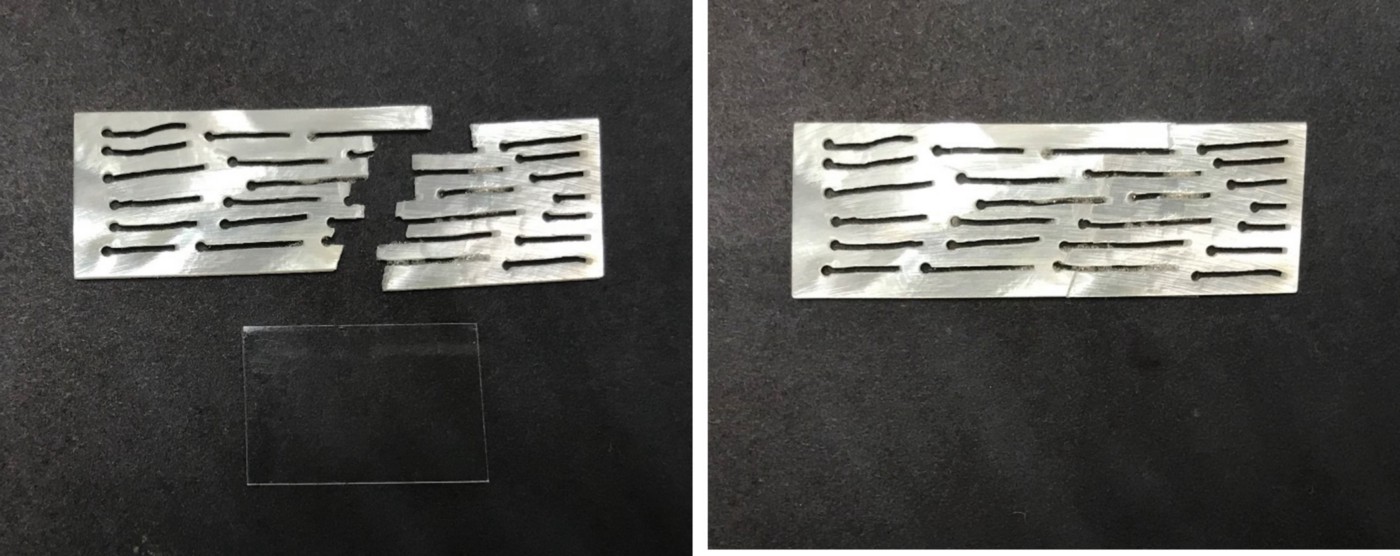
The injury to the fan’s outermost slat experienced resulted in a complex break with numerous separate items. Mainly because former mend makes an attempt working with adhesive on your own had unsuccessful, I determined to attempt making use of a backing content to assistance the destroyed area from powering. I chose Mylar, a thin polyester movie, as it is clear and would not disrupt the visual result of the fragile cutouts but it is also sturdy and rigid adequate to supply sufficient support to the harmed place. To test this process, I designed another mock-up re-making the fan’s cutout approach, then broke the mockup in 50 percent and adhered the Mylar backing in location (fig. 8).
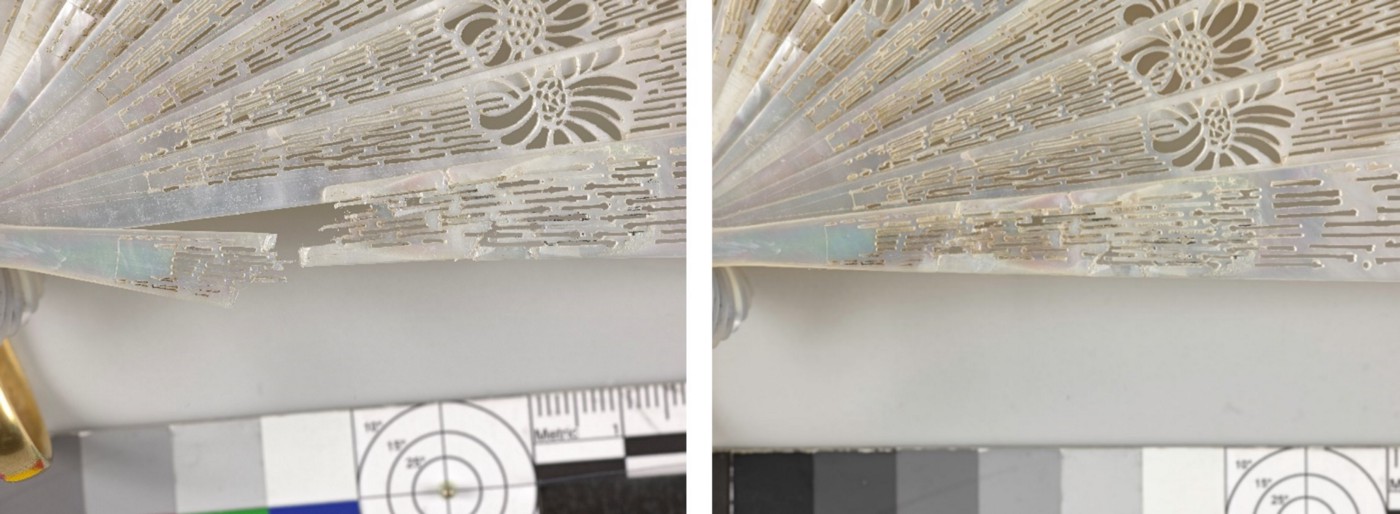
After completing the mock-up, I was ready to correctly repair the initial lover (fig. 9). The outcome is an item that is now visually coherent and consistent with the artist’s originally supposed appearance (fig. 10). It is also a lot more structurally steady and can be properly displayed in the foreseeable future.

Zoom in on this French fan and numerous others by searching the keyword “fan” in Assortment On the internet. Which design catches your eye?
[ad_2]
Supply connection